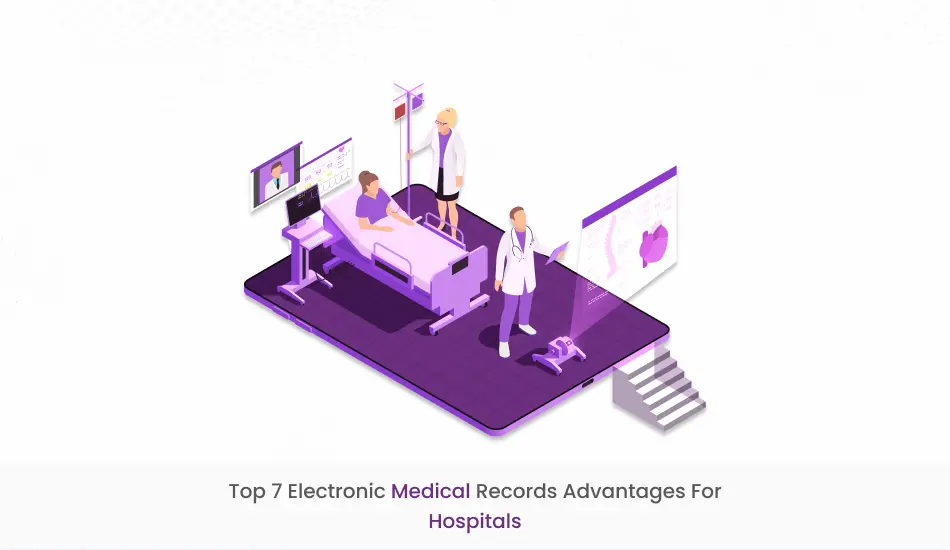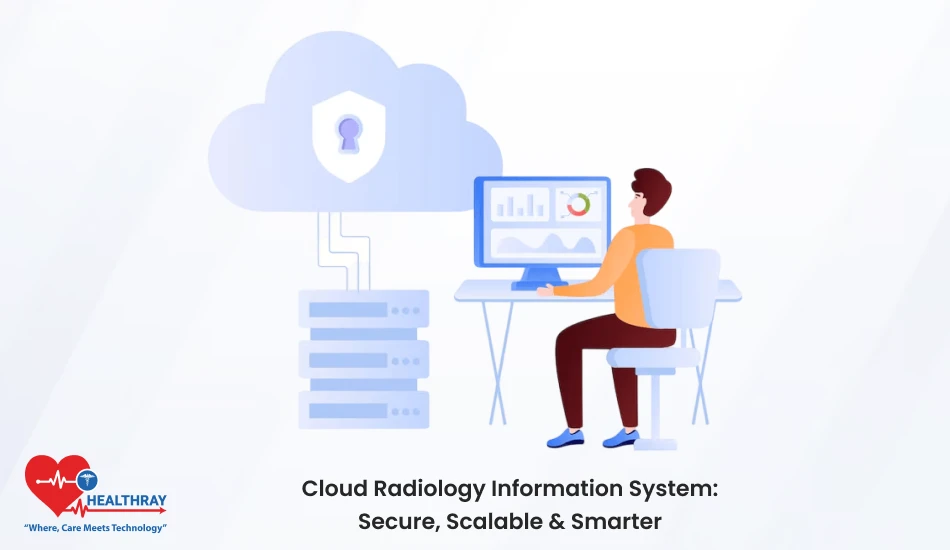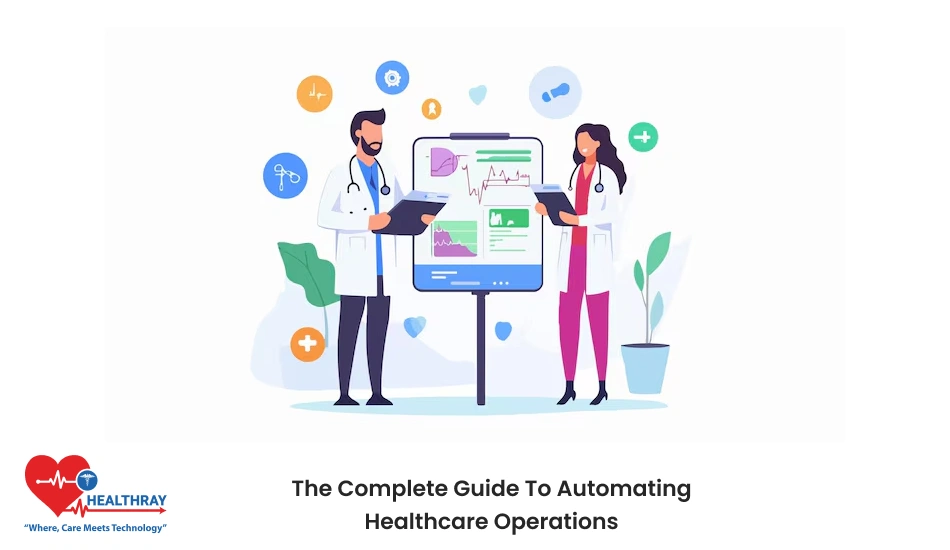Quick Summary
Electronic medical records (EMRs) have numerous points of interest for clinics. These points of interest incorporate upgraded understanding information availability, way better quiet security and care, streamlined authoritative assignments and persistent charging, improved group communication, decreased restorative mistakes medication errors, fetched reserve funds, and bolster for compliance.
Introduction
Innovation has as of late been utilized in the restorative industry to move forward quiet care and boost efficiency. In the healthcare division, electronic therapeutic record (EMR) frameworks are presently commonly utilized. These developments have improved persistent results and supplier get to wellbeing data, making them crucial to the therapeutic industry today.
Electronic medical records can be put away in EMR Software, but they can do more. They effectively advance participation and communication among restorative staff individuals in order to guarantee the most elevated caliber of patient care.
Because Electronic medical records advantages include features and client interfacing, they have ended up the center of consideration for all clinical and budgetary wellbeing exercises in office settings in healthcare settings. Each day, modern understanding of enrollments, patient billing, protections claim installments and planning, patient information passage and maintenance, and appointment planning are all done utilizing the EMR software .
What are electronic medical records?
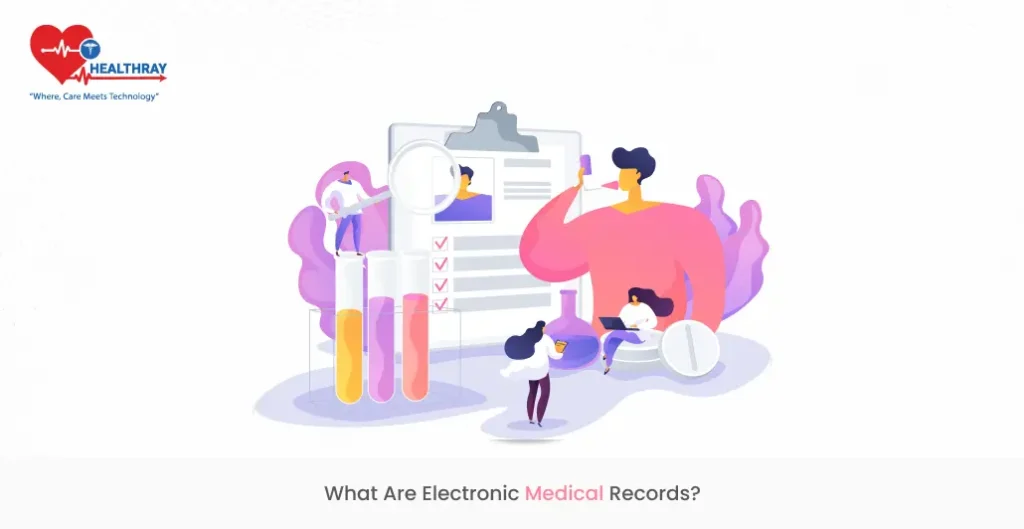
An electronic medical record (EMR) in healthcare is an advanced adaptation of a patient’s medical history that is upgraded by the healthcare supplier. Hence it might incorporate all of the basic clinical and lawful information about the patient’s care beneath the supervision of a particular supplier, counting financial information, progress notes, issues, drugs, crucial signs, past restorative history, immunizations, inquire about office data, and radiological reports. By mechanizing information, the EMR can improve clinicians’ workflow. Through assorted interfacing, the different EHR systems and frameworks can offer assistance with extra care-related assignments like quality observing, comes about following, and evidence-based choice making.
Electronic medical records, or EHRs, are another improvement in healthcare that has the potential to reinforce the bond between specialists and patients. Moreover providers who have a lawful commitment to have open wellbeing information and digital records will be able to give way better choices and care.
For example, the EHR system can improve patient care by:
- Reducing the number of medical errors by improving the clarity and precision of medical records.
- Facilitating patient access to health information, reducing unnecessary testing, reducing treatment wait times, and equipping patients with the knowledge they need to make better decisions.
- Reducing medical errors by improving the clarity and accuracy of records.
The Top Advantages of Electronic Medical Records Software
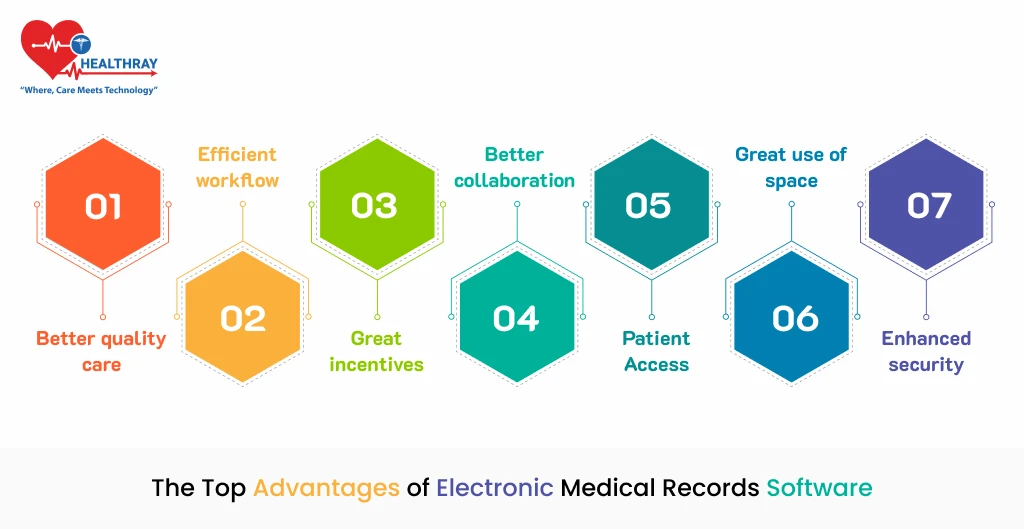
Using Electronic Medical Records (EMR) software has become crucial for healthcare practitioners due to the rapid changes in the healthcare business. Numerous advantages of this technology include enhanced security, accelerated processes, and better patient care. It completely transforms the handling, retrieval, and storage of medical data. Let’s now look at the primary advantages of electronic medical records :
Better quality care
Software for electronic therapeutic records empowers therapeutic specialists to give patients with higher-quality care. Doctors can make way better choices if they have prompt access to total understanding information, counting lab discoveries, treatment plans, and restorative histories. Hence this openness moves forward treatment results, brings down therapeutic blunders, and ensures progression of benefit. EMR frameworks habitually incorporate clinical choice back-and-support capabilities that give real-time clinical direction to maximize the quality of care advance advertised.
Designing of a customized feature in electronic health records system to create personalized experience and eases physician work tasks like draft prescriptions. The electronic medical records system complies with unique guidelines to safeguard information, compatible with any medical device, and provides voice-to-text facility to save time on clinical documentation. Additionally, the graphical dashboard aids to analyze information and predict clinical outcomes.
Efficient workflow
The capacity of EMR software to optimize workflows within healthcare institutions is one of its most significant benefits. Healthcare professionals may quickly and efficiently order tests, write prescriptions, and record patient interactions using electronic records. This lessens the need for manual documentation, eases administrative workloads, and lowers the possibility of mistakes brought on by handwriting that is difficult to read or lost paperwork. Consequently, there is an increase in overall productivity and efficiency as healthcare personnel can dedicate more time to patient care.
Great incentives
Healthcare businesses can harvest various benefits and motivations by actualizing electronic restorative records computer programs. Recognizing the long-term benefits of the EMR system in healthcare bring to conveyance, governments, and administrative specialists may give monetary motivations or endowments to empower utilizing EMR frameworks. For healthcare suppliers of all sizes, these motivations can offer assistance to settle the forthright costs of conveying and keeping up the EMR program, making it a more practical venture.
Better collaboration
Software for electronic medical records makes it easier for healthcare professionals engaged in a patient’s care journey to collaborate and communicate with one another. Clinicians may readily exchange patient data, plan treatments, and work together in real time on complex cases using safe digital platforms. This interdisciplinary approach to clinical health also guarantees that patients receive comprehensive and holistic care across many disciplines and venues, improves care coordination, and develops better teamwork.
Patient Access
EMR systems give individuals internet access to their medical records and health information, enabling them to manage their health actively. Patients can stay informed and actively involved in their healthcare decisions by accessing lab reports, medication lists, and appointment dates. Additionally, electronic medical records software frequently includes patient portals that enable people to simply schedule appointments, seek prescription refills, and communicate securely with their healthcare providers from the comfort of their homes.
Great use of space
The shift from paper-based to electronic medical records considerably lowers the physical storage needed in healthcare facilities. Healthcare companies can reallocate valuable space toward other critical goals, including growing clinical areas or adding more services through digitizing patient information and removing heavy file cabinets and storage rooms.
Tracking the inventory flow from their acquisition time to disposing or consuming. Showcasing the stock level and the exact number of quantities to determine the needed space. The electronic medical records system helps to store assets and instrumentation based on their size. Helps to arrange inventories in the available space and no space has been left.
In the end, this space optimization helps make better and more economical use of resources, which is advantageous to patients and healthcare practitioners.
Enhanced security
In the healthcare industry, patient protection and information security are pivotal. Software for electronic restorative records gives solid security highlights to secure private information. Advanced encryption components, client authentication strategies, and audit trails work together to diminish the plausibility of undesirable data breaches. These measures ensure that sensitive information is kept private and secure. Besides, role-based access limitations can be implemented by healthcare software suppliers using EMR frameworks. This restricts access to essential health information technology, allowing authorization only for authorized individuals.
Utilizing electronic medical records software has numerous benefits that change the arrangement and organization of healthcare. EMR frameworks are vital in affecting how healthcare information is conveyed in the future. They raise patient engagement and ensure information security while also expanding productivity and quality of healthcare providers. Utilizing electronic therapeutic records computer programs will be significant for healthcare businesses. This is especially true in the progressive healthcare environment as long as innovation continues.
Try out electronic medical record software from Healthray!
With Healthray, discover the dynamic potential of the electronic therapeutic record (EMR) program! Our state-of-the-art EMR course of action is to optimize your restorative practices. It features user-friendly interfaces and competent highlights tailored to your particular necessities. You can quickly supervise understanding records, help administrative work, and move forward bunch communication in the healthcare industry utilizing Healthray.
Our program guarantees adherence to therapeutic industry, guidelines and laws, calm data, and updating precision and viability. Utilize offices like coordinates charging and programmed printed material. Additionally, make use of editable layouts to streamline your forms and concentrate on giving top-notch persistent care.
With Healthray electronic medical records, you can instantly convert your clinical documents into text, aids to diagnose properly, and ease to make healthcare decisions. Reduces burdensome tasks such as supervise entire healthcare inventory, manage resources, and administer funds. Reshape the administrative cabin from the hustling work environment to smooth task execution.
Additionally, creating a visualization dashboard that assists to anticipate outcomes and minimize treatment planning. Support to create ABHA digital cards with just a click. Embedded advanced security to decrease patient data risks, decrease clinical expense, increase customer retention, and save a huge amount of time. Not only one single system but a diverse integrated system to improve coordination and decrease workload that promotes work-life balance.
Get going with the Healthray electronic medical records software directly. Its electronic medical records computer program has different benefits that alter the course of activity and organization of healthcare. EMR frameworks are essential in shaping the future of healthcare delivery. They raise patient engagement, ensure information security, and enhance the effectiveness and quality of healthcare providers. Utilizing electronic medical records computer programs will be basic for healthcare businesses to succeed in the powerfully advanced healthcare environment. This is as long as advancement of medical frameworks keeps making a practice to greater heights!
Conclusion
The healthcare industry is experiencing a change since Electronic Medical Records (EMRs) came into existence. EMRs have expanded productivity and diminished medical blunders, both economically and clinically. EMRs offer a way better way of putting away and trading healthcare information for specialists, chairpersons, and patients. Its necessary to ensure taking notes over time. Electronic well-being records are effortlessly accessible by streamlining the data entry process. EMRs spare space and lower restorative mistakes. Moreover, they make it easier for specialists to order tests and quickly access patient records.
Technology for electronic medical records is evolving swiftly. Doctors and other healthcare providers widely use electronic medical records (EMRs) to enhance their patients’ standard of health care throughout. Hence physicians and patients can access electronic health records more quickly and easily, thanks to EMRs.
Notwithstanding its drawbacks, one advantage of the EMR system in healthcare is that it improves patient health outcomes. Physicians and patients may manage medications and schedule preventative checkups. They can also monitor chronic illnesses with the help of data that one can follow over time. Most affordable EMR systems allow for e-prescribing, charting, and order input. Patients frequently access routine medical reminders and decision support through an online patient portal.
